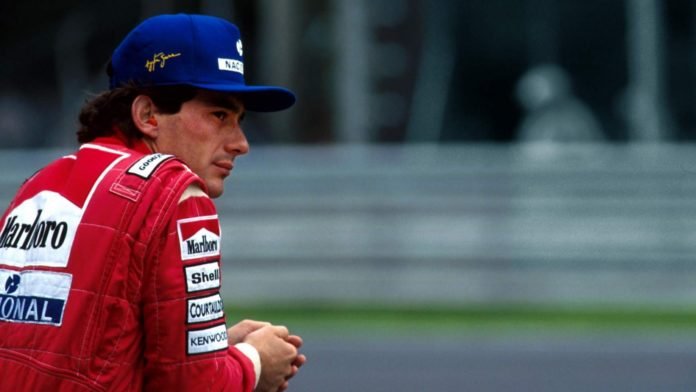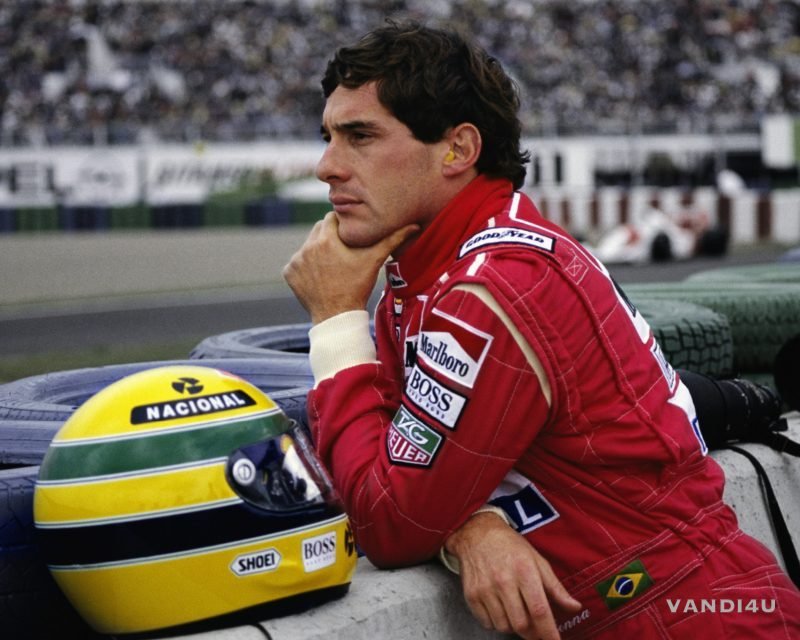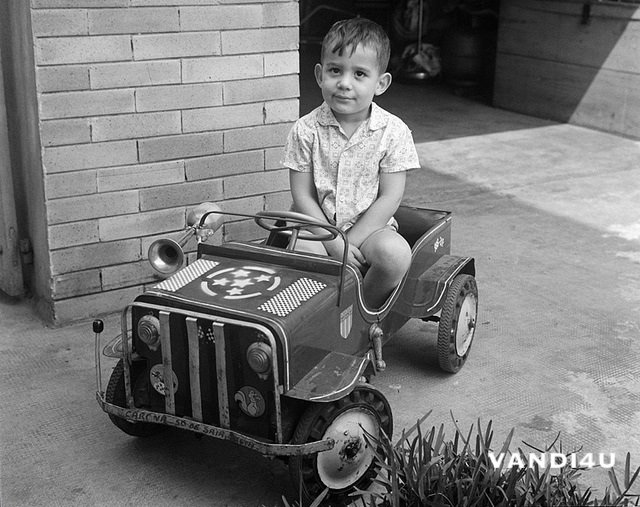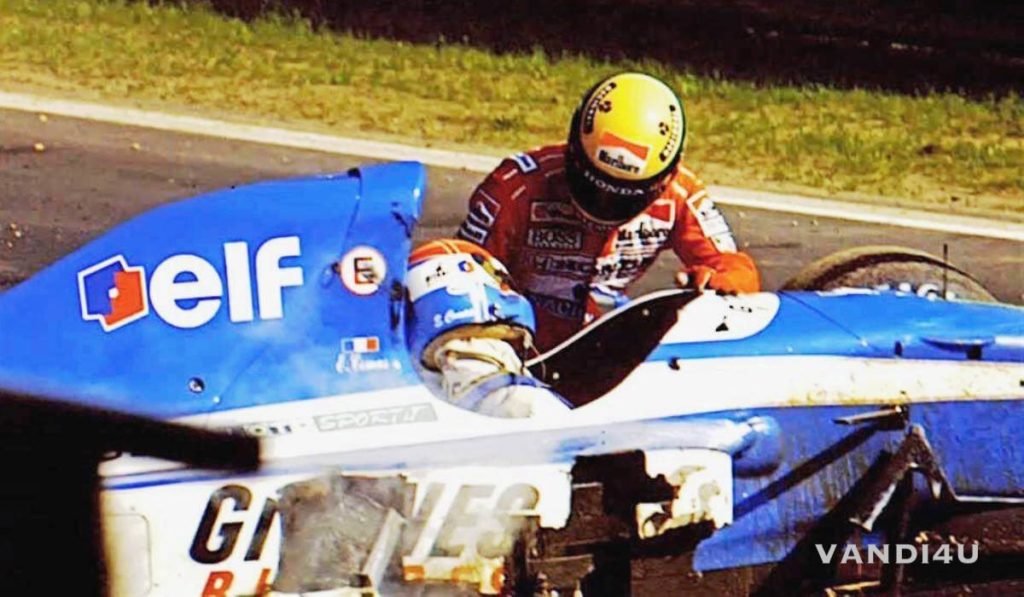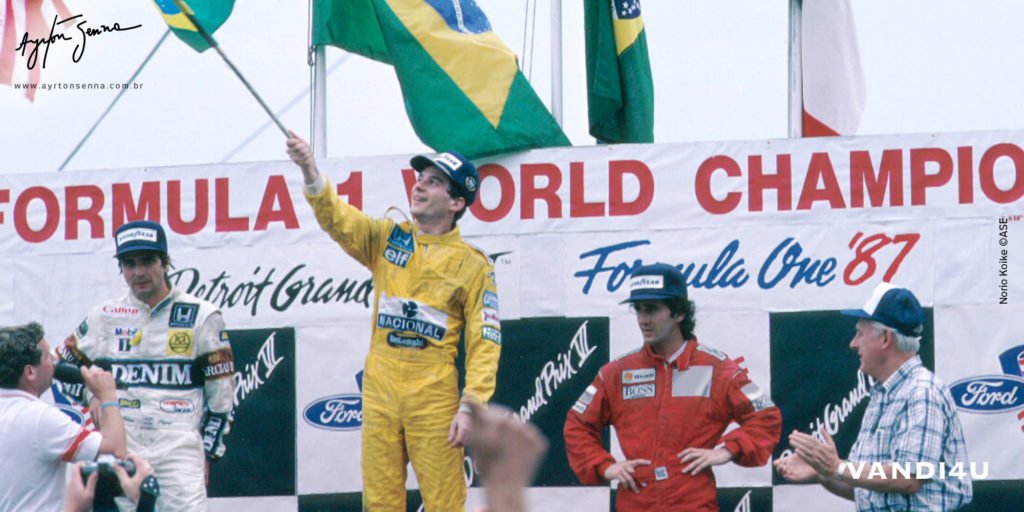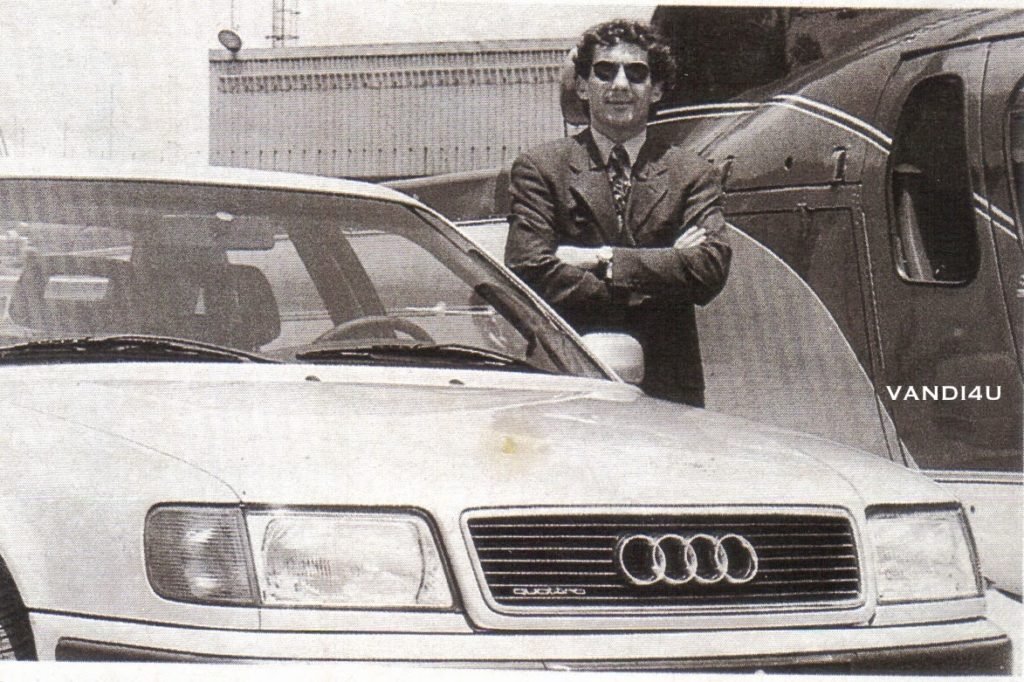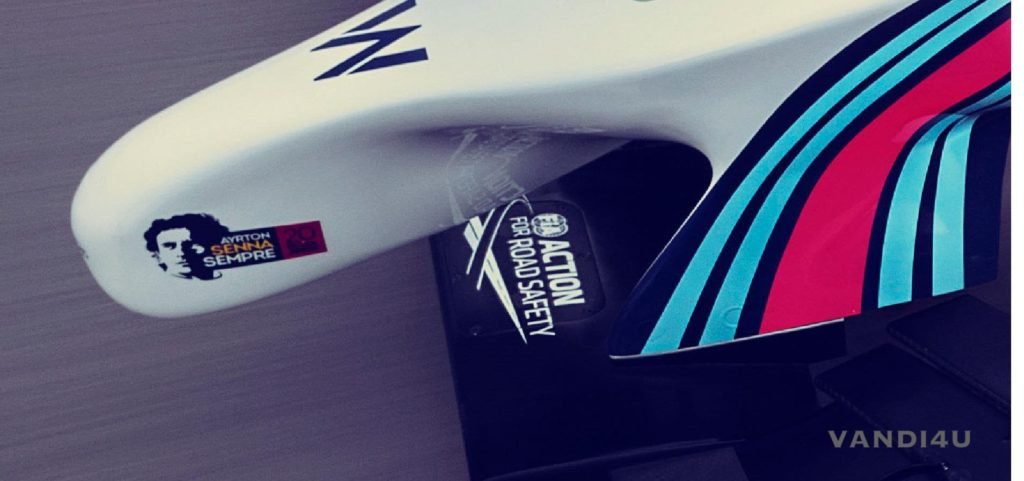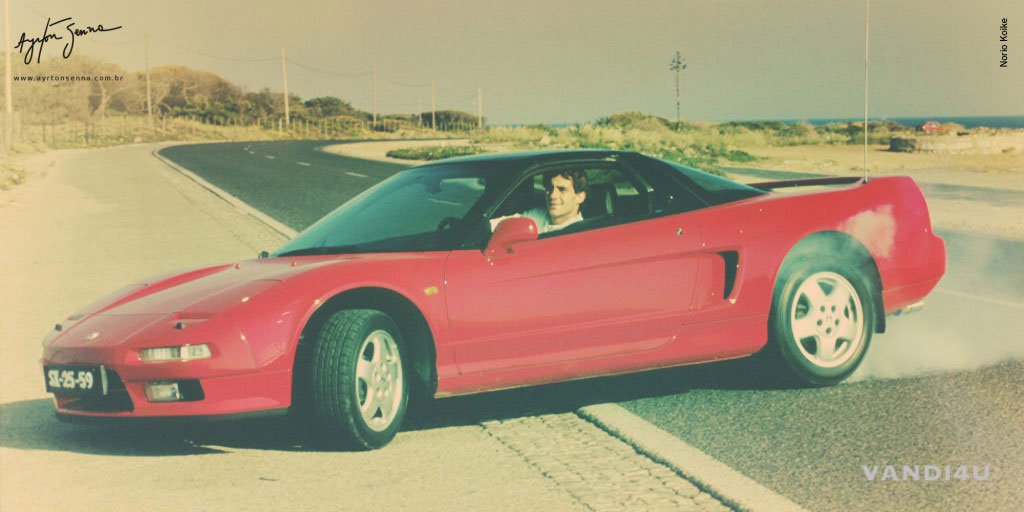Ayrton Senna described as a “Racer. Hero. Legend” by F1.com was a renowned extraordinary Brazilian racer who won the Formula One World Driver’s Championship three times – in 1988, 1990 and 1991. He was probably the greatest exponent of the flat-out qualifying lap the sport has ever seen, taking 65 pole positions in 162 races. Ayrton Senna da Silva was born on March 03, 1960 in the North Zone of the city of São Paulo in Serra da Cantareira, Brazil.
Senna was born in the Pro-Matre Maternity Hospital of Santana, a neighbourhood of São Paulo. The middle child of wealthy Brazilian landowner and factory owner Milton da Silva and his wife Neide Senna da Silva, he had an older sister, Viviane and a younger brother, Leonardo. He was left-handed. The house where Senna spent the first four years of his life belonged to Neide’s father, João Senna. It was located on the corner of Avenida Aviador Guilherme with Avenida Gil Santos Dumont, less than 100 meters from Campo de Marte, a large area where they operated the Aeronautics Material park and an airport.
1. Learned to drive at the age of 7
Senna was highly athletic, excelling in gymnastics and other sports, and developed an interest in cars and motor racing at the age of four. He also suffered from poor motor coordination and had trouble climbing stairways by the age of three. An electroencephalogram (EEG) found that Senna was not suffering from any problems. Senna’s parents nicknamed him “Beco”. At the age of seven, Senna first learned to drive a Jeep around his family’s farm and also how to change gears without using a clutch.
2. Senna’s first go-kart
Senna’s first kart was built by his father using a small 1-HP lawnmower engine. Senna started racing at Interlagos and entered a karting competition at the age of 13. He started his first race on pole position, facing rivals who were some years older than him; despite this, he managed to lead most of the race before retiring after colliding with a rival. His father supported his son and Lucio Pascal Gascon soon managed the developing talent.
Ayrton Senna da Silva was born on March 03, 1960 at Serra da Cantareira, Brazil. Ayrton Senna was raised in the North Zone of the city of São Paulo in Serra da Cantareira (Brazil), where he shared a room with his brother, Leonardo. It was from there that he went to high school and to the racetrack, crossing the entire city of São Paulo to kart race at Interlagos. Most of the time these trips were made with him driving the car in order to arrive faster. One of the drivers that was hired to drive him didn’t stay in the job long: “Why should I continue as a driver if it is the young guy who does the driving?”
3. Senna saved opponents life
Erik Comas may not be a name which jumps to mind, the Frenchman made 63 starts in Formula 1 between 1991-94 for Ligier and Larrousse, but if it wasn’t for Senna, Comas may not have been here to tell his Formula One tale. During practice for the 1992 Belgian Grand Prix, Erik Comas crashed his Ligier heavily at Blanchimont and lost consciousness. His engine was screaming and close to explosion. Ayrton Senna was the first driver on the scene to help Erik Coma’s life, while the rest of the field raced by. He turned off the Ligier’s engine and held Comas’s head upright until medical personnel arrived, in order to make sure that his airway was clear. Comas missed the race, but was not seriously hurt thanks in part to Senna’s help.
“He stopped his car, he ejected himself from it and at his own risks came to my car and stop the engine. Even with the yellow flags, the circuit was still very dangerous, he searched for the circuit breaker and stopped the motor preventing it from burning or even exploding.”
– Erik Comas
4. Big fan of Madonna

Ayrton Senna never hid the fact that he was a huge fan of pop singer Madonna. The American singer’s pop music was always blasting from Ayrton’s headphones, especially during his long trips between Brazil and Europe. During long journeys between Brazil and Europe, Ayrton’s headphone would be often blasting the American singer’s pop beats. Aryton Senna’s Niece Bianca Senna once shared a mishap involving a Madonna laser-disc and sage advice from Ayrton ended up teaching Bianca an important life lesson.
“I was probably 11 and we were spending our January vacations in Angra dos Reis (RJ), as usual. I wanted to watch one of Beco’s laser-discs. It was a Madonna one that he loved. Only it slipped from my hand and landed on the floor. It broke in half. I was freaking out because I knew that he loved that LD. Naively, I put it back in place and pretended nothing had happened. Later, he asked me if I knew who had cracked the Madonna LD. I got nervous and wasn’t able to lie. I ended up confessing and apologizing profusely. Beco, as calm as ever, said, ‘I don’t care that you broke the LD. The bad part was that you tried to hide your mistake. You shouldn’t do that. Not to me, not to anyone.Especially not to yourself. It will only hurt you’. At the time, I probably turned redder than a tomato. But overtime I was able to understand that lesson and I always think about it when something goes wrong.”Bianca Senna said.
5. Cycling and model airplanes
Besides racing, he enjoyed playing tennis, running, bicycling, swimming, jet skiing among others. He did well in almost all the sports he played. The only one that he was not good at was soccer. Senna wasn’t able to control the ball and was never the first one chosen for the team. During the Formula 1 physical preparation, one of his favorite activities to stay in shape was cycling. However, the three-time champion developed his taste for bicycles several years before he became an athlete.
“I started when I was 3 or 4 years old. I had a small yellow bike. That was how I got started and that bike was everything, to me. I rode it until I was 12, when I already was way too big for it. But I didn’t want a bigger, better bike, because that was the one I had learned how to ride on – how to keep my balance, how to go in a straight line and race other children. It was a very healthy and pleasant activity”- Ayrton Senna. in 1994, he even launched an exclusive line of bicycles by renowned manufacturer Carraro, in a partnership with the Senna brand. The profits from units sold at the time helped fund the Ayrton Senna’s Institute’s very first social education solutions.
“Of course, everything wasn’t always perfect. One time, he arrived all happy with a new remote control helicopter and went to the garden to fly. The game was short-lived: all he managed to do was take the helicopter off the roof of the house and see it crash into the ground! ”
– D. Neyde Senna (Ayrton Senna’s mother)
Model airplanes were a passion where he could show his ability and precision at the controls of small machines. His major challenge was to make the boldest manoeuvers without an instructor. And he was successful after only a few hours of training.
6. Senna won his first F1 race on a rain socked track
On a cold and wet Portuguese day in April 1985, Ayrton Senna scored the first of his 41 Grand Prix victories. While other drivers – including the likes of Alain Prost and Keke Rosberg – struggled simply to keep their cars pointing in the right direction, Ayrton Senna, driving in his second race for Lotus and only his 17th Grand Prix, put on a masterclass in wet-weather driving. When the chequered flag came down after more than two hours of racing, the fresh-faced Brazilian had not only won the race by over a minute, led every lap and claimed fastest lap (to add to the maiden pole position he’d earned in dry conditions), he’d also made good on the extraordinary promise he’d shown a season earlier when as a rookie he finished a brilliant second for Toleman in similarly abysmal weather at Monaco.
“you will never know the feelings of a driver when winning a race. the helmet hides feelings that cannot be understood”
– Ayrton Senna
Renault driver Patrick Tambay said of the 1985 Portuguese Grand Prix, “was a nightmare. It was p*ssing with rain from start to finish, very, very flooded everywhere, the cloud ceiling very low and the light very poor. It was survival of the fittest.” His very first Formula 1 race in Monaco is still considered, to this day, one of the greatest drives of all time.
7. Senna won the 1991 Brazilian GP with no 3rd, 4th or 5th gears
1991 Brazilian GP was Senna’s first victory at his home race, and he sure had to work hard for it. After his transmission began to fail later in the race, Senna was left stuck in sixth gear, but Riccardo Patrese, who had gearbox issues of his own, was catching him rapidly. With his will power. Senna managed to drive fast enough to take the chequered flag, but so exhausted from his battle that he had to be lifted from his McLaren and driven to the podium in the medical car.
“i don’t know driving in another way which isn’t risky. each one has to improve himself. each driver has its limit. my limit is a little bit further than other’s”
– Ayrton Senna
8. Senna’s agreement made Audi build cars in Brazil
The history of Audi Brazil began on November 18, 1993 when Senna, then three-time Formula One world champion, signed a cooperation agreement in Ingolstadt between his family’s company Senna Import and Audi AG. In doing this, Ayrton Senna locked in both importation and sale of Audi automobiles for the Brazilian market, business that began in March 1994. In the years that followed, Audi Senna Ltda. built a factory to make the A3, as well as the VW Golf. The factory in Brazil is still going strong, but is now fully owned by Audi.
9. Every Williams F1 car carries Senna’s tribute
The Williams F1 team has been paying tribute to the late great Ayrton Senna for past 26 years. Williams F1 was the last team he drove for until his death in 1994 at the San Marino GP. Since then, Williams F1 have had his logo emblazoned on their car and even in 2020, nearly 26 years later, it is still there. Founder Frank Williams had insisted on having the logo there ever since that horrible weekend. The explanation they gave in 1995 when the car first featured it was that this way, by putting it in that place, Ayrton will always be in front. The Grove-based team have undergone several changes and had several new sponsors. But one thing that will never change is the iconic ‘S’ logo on the car.
“After a long time in competitions, i just want to win. i enjoy high-level performances”
– Ayrton Senna
10. The Acura NSX was a great car because of Senna
Honda had a partnership with McLaren,While Honda was designing the original NSX, it also had a highly successful partnership with Senna and McLaren, so Senna spent a lot of time in Japan, driving and giving feedback to help the engineers refine the car. Suzuka was kind of Senna’s personal playground where he tested the Honda NSX. It was just one of many tracks he mastered.
11. Deep friendship with his teammate Gerhard Berger
Austrian Gerhard Berger, whom Ayrton Senna raced with on the McLaren team for 3 years – 1990, 1991 and 1992. Together they featured in some great tales. Once, in an amusing incident, Gerard Berger replaced Senna’s passport photo with what Ron Dennis described as a picture of “an equivalent-sized piece of male genitalia.” Senna’s fame meant he rarely had his passport checked but on a later trip to Argentina, Berger’s prank resulted in officials holding the Brazilian for 24 hours. As a response to this gag, Senna super glued all of Berger’s credit cards together.
12. F1 is now a safer sport because of Senna
The deaths of Aytron Senna and Roland Ratzenberger at the San Marino GP 26 years ago led to the current Formula 1 safety standards. In the aftermath of the Imola crashes, then FIA President Max Mosley instituted a host of changes. An immediate programme of circuit alteration was undertaken and using computer analysis the FIA identified a range of dangerous corners that needed to be made safer. Test procedures for tyre barriers become mandatory and barriers also had to be secured by rubber belts. The speed limit in the pit lane is reduced to 80 km/h in practice and 120 km/h in races and stricter standards for helmet design were introduced.In the two decades since, the FIA has continued a rigorous safety research and development programme.
13. Senna predicted the accident
To see what could be done to make Imola’s Tamburello a safer corner. Senna and Gerhard Berger made a visit to Imola’s Tamburello corner, after Berger and several others had been involved in serious incidents there. Together, they investigated the surroundings and wanted to move the retaining wall back, but the Santero river prevented from doing so. After climbing through a partition in the retaining wall to investigate the surroundings, Senna concluded that somebody would lose their life there, and five years later, it proved to be his that would be cruelly taken.
“it’s going to be a season with lots of accidents, and i’ll risk saying that we’ll be lucky if something really serious doesn’t happen”
– Ayrton Senna
14. Senna’s funeral was among the largest in history
Senna died at the age of 34 after succumbing to fatal injuries sustained during his race at the San Marino Grand Prix, on 1 May 1994. There is no simpler way of putting it, Senna was loved by all and at his funeral, millions lined up to pay their last respects at his closed coffin wrapped in the Brazilian flag. The Government of Brazil declared three days of national mourning. A scene from the funeral, especially with Alain Prost leading the pallbearers at Senna’s final resting place truly still brings out an emotional side for most. Brazil also marked a national holiday for Senna on the day. The Italian Air Force offered to fly the coffin back to Brazil, but the Senna family wished that it return home in a Brazilian plane.
Contrary to airline policy and out of respect, Senna’s coffin was allowed to be flown back to his home country in the passenger cabin of a VARIG McDonnell-Douglas MD-11 airliner, accompanied by his distraught younger brother, Leonardo, and close friends. The plane was escorted by fighter jets into São Paulo–Guarulhos International Airport on 4 May 1994. About three million people flocked to the streets of Senna’s hometown of São Paulo to offer him their salute. This is widely accepted as the largest recorded gathering of mourners in modern times. Over 200,000 people filed past as his body lay in state at the Legislative Assembly building in Ibirapuera Park. After the public viewing, a 21-gun salute was fired by the 2nd Artillery Brigade and seven Brazilian Air Force jets flew in a diamond formation as the funeral procession made its way to Morumbi Cemetery.
15. His charity works are still alive
Ayrton Senna had good wealth but he kept most of his charitable work hidden from the public eye until his death. Today, his legacy lives on in Brazil with the Ayrton Senna Institute, the NGO that was created months after his death by his sister Viviane and carries out educational activities for the underprivileged in Brazil. For more than 25 years the institute has worked to bring education to millions of Brazilian children and young people. Its mission is to “develop a human being as a whole, preparing them for life in the 21st century in all its aspects”. Even 26 years after his death, Ayrton Senna is still one of the most valuable sports brands in the world.
“I have no idols. i admire work, dedication and competence”
– Ayrton Senna


